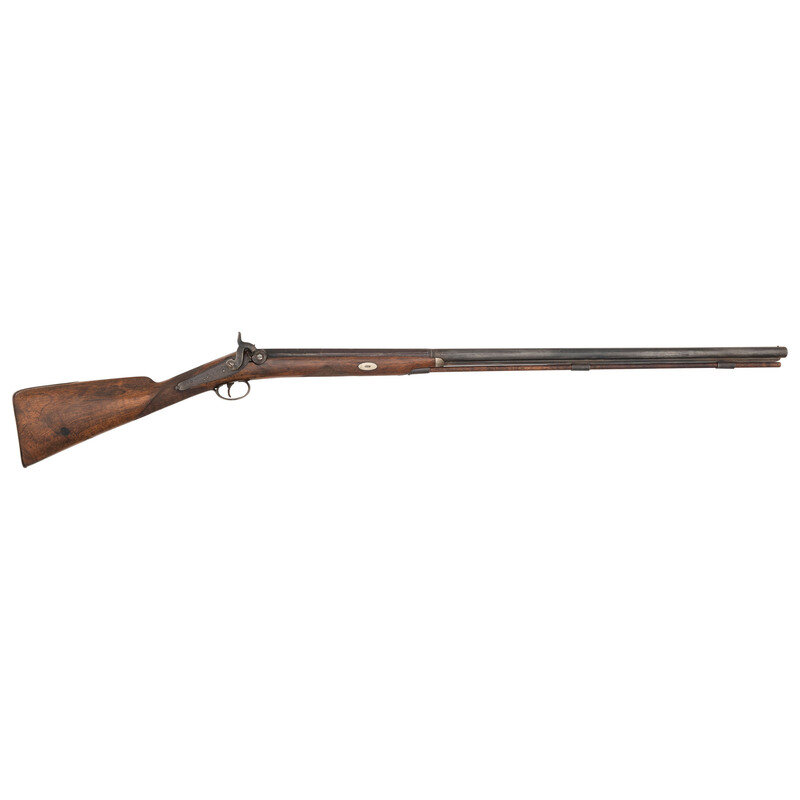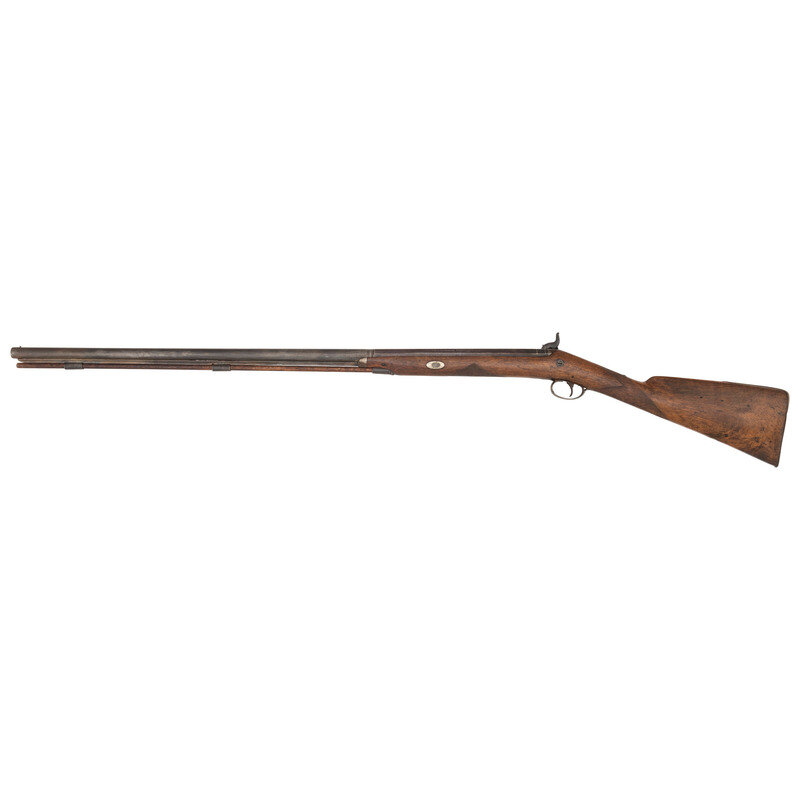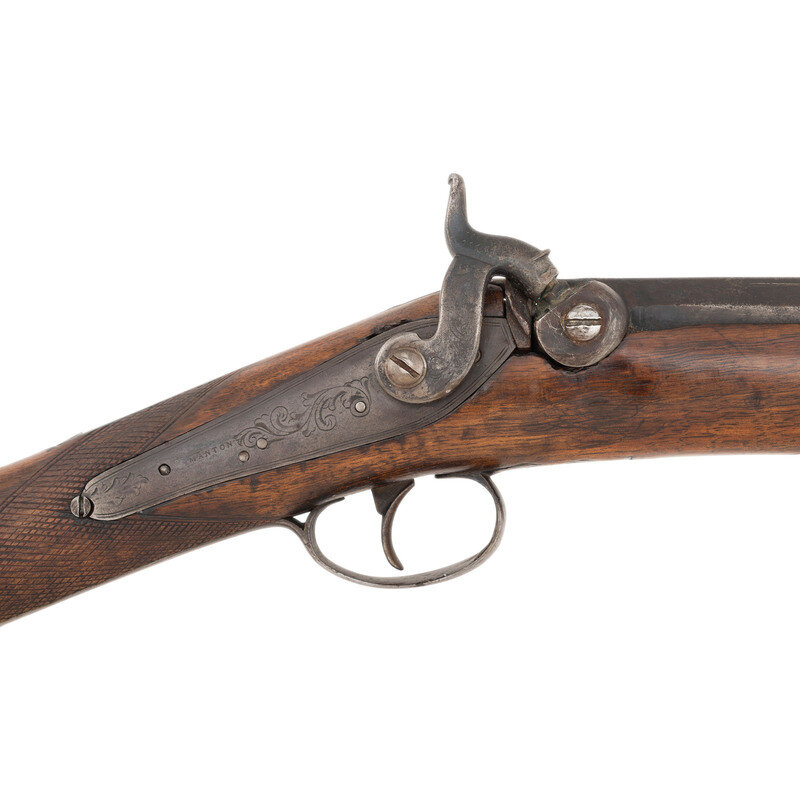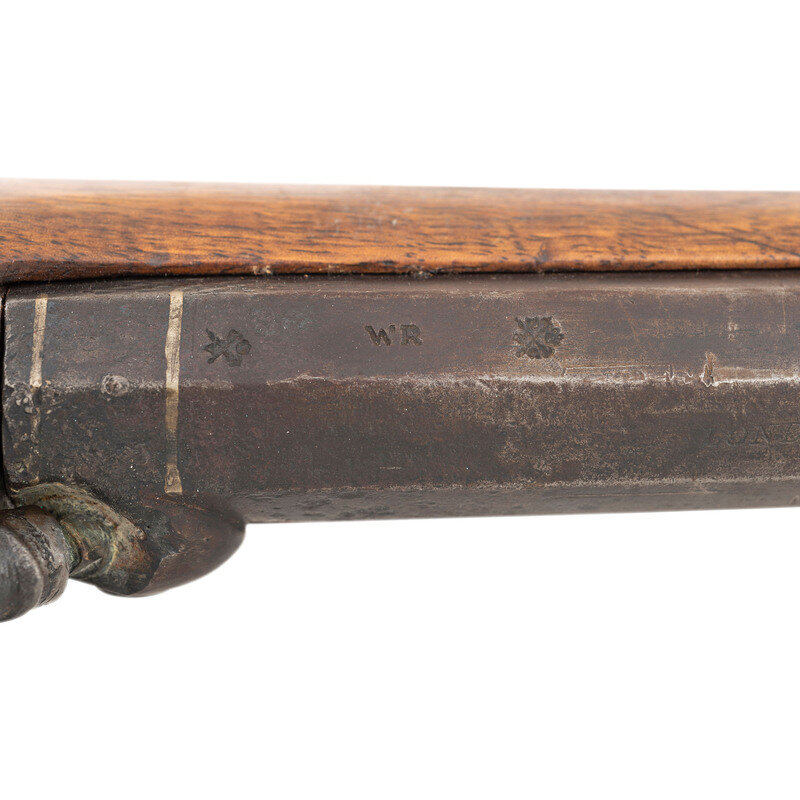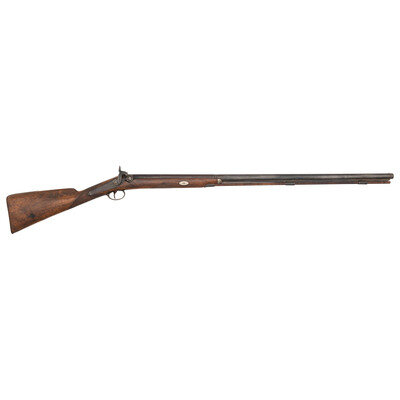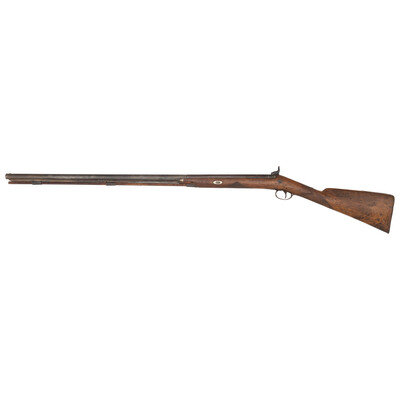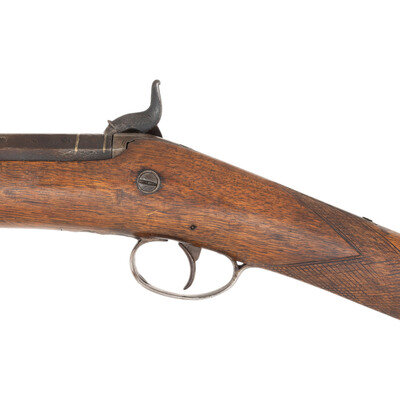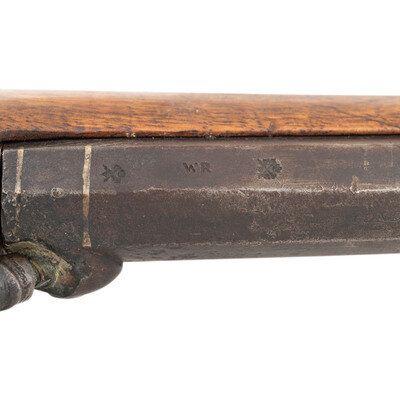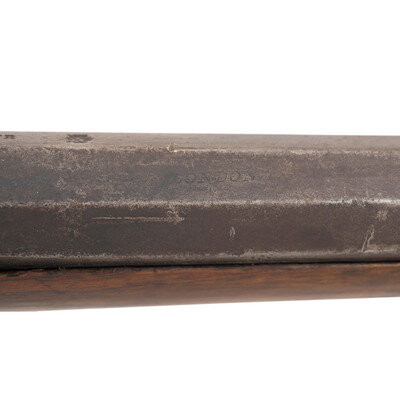About .64 bore diameter. 35" two stage octagonal to round barrel. SN: NSN. Browned metal finish with brass stock fixtures. Walnut stock has checkering to straight grip and forearm, along with a German silver forend cap. Percussion fowler with a brass bead front sight. Markings include MANTON to lockplate along with simple floral scroll. Barrel has maker's mark WR (possibly W.R. Wallis) surrounded by two post-1813 Birmingham proofs including {crown/crossed scepters BPR} and {crown/crossed scepters V} to left of Nock's form. Top of barrel is marked LONDON. Engravings include simple foliate scroll to lock, triggerguard, upper tang, and heel of buttplate. Barrel has two silver or pewter inlays to Nock's form. Included with item is a wood ramrod.
This item is likely a Manton & Co. production from around 1847-1878 when the company was under the ownership of W.R. Wallis. According to Experts on Guns & Shooting by G.T. Teasedale-Buckell, Joseph Manton sent his son Frederick to Calcutta around 1820 to establish a branch of Joseph Manton guns in India. The branch became known as Manton & Sons and opened in 1825 (Not to be confused with Manton & Sons of London owned by Joseph's brother John Manton). Known for producing high quality sport guns and dueling pistols, Joseph Manton went bankrupt around 1826 and was sent to debt jail in 1829. Manton & Sons was then managed by his sons Frederick, John Augustus (also went to debt jail around 1836), and Edward until about 1846 or 1847 when the business was bought by W.R. Wallis. Without Joseph Manton closely involved, production quality diminished and the name was later changed to Manton & Co. at some point during the end of the Manton's ownership and start of Wallis' ownership. Wallis ran the business until he retired from India around 1878 and handed the company down to his descendants.
